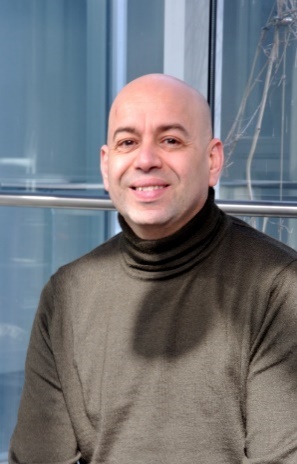
报告题目:Carbon dots: Synthesis, characterization and applications
报 告 人:Rabah Boukherroub
报告时间:2019.6.20 下午14:00
报告地点:东配楼五楼大会议室

摘要:
The carbon nanomaterials family is ranging from sp3-rich nanostructures such as nanodiamond (also known as diamond nanoparticles) to sp2-rich graphene nanosheets and graphene quantum dots (GQDs). Between these extremes, one finds a large variety of carbon nanostructures with varying sp2/sp3 ratio. For instance, nanodiamonds, made up of a highly ordered diamond core, have a shell structure which can be a layer of surface functional groups or a stabilizing sp2 carbon shell. Carbon nanoparticle (CNPs) encompass a panel of nanomaterials including carbon black, amorphous carbon, carbon soot, carbon dots (C-dots) and core-shell nanocarbons, with no real scientific consensus on the term describing them. Carbon black, for example, is the generic name of carbon particles which are produced by incomplete combustion of gaseous or liquid hydrocarbons. Amorphous carbon, informally known as cool or carbon soot, is an allotrope of carbon without crystalline structure, consisting of a mixture of sp3 and sp2 carbon, which converts into graphite upon graphitization at high temperature. These particles are sometimes also referred to as carbon dots or carbon nanodots with overall diameter of about 100 nm, existing often as aggregates of smaller particles of 20-50 nm in diameter.
Carbon quantum dots are part of this rapidly expanding research field on carbon materials and many reviews appeared recently in the literature highlighting their optical properties, structures, and applications.1 Their unique properties have inspired extensive studies and provide great potential for a wide variety of applications.
In this presentation, I will focus on the different strategies developed for the preparation of carbon dots and their physico-chemical characterization with a special emphasize on their optical properties. Then, I will discuss some applications of these carbon nanostructures in the biomedical field (sensing, imaging, antiviral,..).
References:
1 Carbon-Based Quantum Particles: An Electroanalytical and Biomedical Perspective
, Mandana Amiri, Mika Sillanp??Frank Marken, Rabah Boukherroub, Sabine Szunerits
Chemical Society Reviews. 2019. DOI: 10.1039/c8cs00445e
个人简介:
Dr. Rabah Boukherroub received a PhD in chemistry from the University Paul Sabatier in Toulouse, France. He is currently a CNRS research director and a group leader at the Institute of Electronics, Microelectronics and Nanotechnology (IEMN), University of Lille, France. He is Associate Editor for ACS Applied Materials & Interfaces. He is also a guest Professor, China University of Petroleum, Qingdao, China. His research interests are in the area of functional materials, surface chemistry, and photophysics of semiconductor/metal nanostructures with emphasis on biosensors, photocatalysis, and nanomedicine. He is a co-author of 500+ research publications and wrote 34 book chapters in subjects related to nanotechnology, materials chemistry, and biosensors. He has 11 patents or patents pending.



